Wildlife Show Signs of Spring on Chesapeake Conservancy Webcams
Peregrine Lays Egg, Osprey Awaits Mate
Great Blue Heron Rookery Cam – Coming Soon!
Annapolis, MD – Viewers from around the world are watching wildlife welcome spring in the Chesapeake on the Chesapeake Conservancy’s webcams. The organization currently hosts two wildlife webcams featuring peregrine falcons and osprey, and is currently crowdfunding to launch a third webcam featuring a great blue heron rookery on Maryland’s Eastern Shore.
“The Chesapeake Conservancy uses technology to connect, conserve and restore the Chesapeake Bay,” Chesapeake Conservancy President & CEO Joel Dunn said. “Part of our mission at the Chesapeake Conservancy is to strengthen the connection between people and the watershed, because we know that when people appreciate something, they will be more likely to help take care of it. We hope that viewers of the wildlife webcams will go on to support programs that provide important habitat for wildlife, such as Program Open Space, and the Land and Water Conservation Fund.”
Peregrine Falcons: “Boh & Barb” Welcome First Egg on March 16
www.chesapeakeconservancy.org/peregrine-falcon-webcam
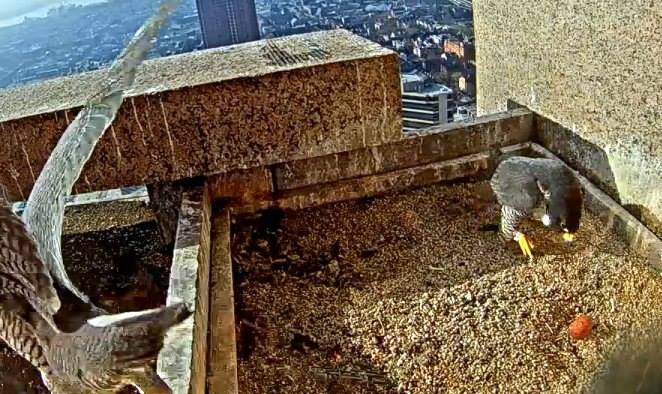 Today, “Boh” & “Barb,” the peregrine falcons that make their home on the 33rd-floor ledge of the Transamerica Building at 100 Light Street in downtown Baltimore, welcomed their first egg of the season. Video of the egg being laid is available here. The public may view the peregrine falcon webcam at www.chesapeakeconservancy.org/peregrine-falcon-webcam.
Today, “Boh” & “Barb,” the peregrine falcons that make their home on the 33rd-floor ledge of the Transamerica Building at 100 Light Street in downtown Baltimore, welcomed their first egg of the season. Video of the egg being laid is available here. The public may view the peregrine falcon webcam at www.chesapeakeconservancy.org/peregrine-falcon-webcam.
The Chesapeake Conservancy first launched the peregrine falcon webcam in March 2015. In its first year, there were more than one million views. People from around the world had their eyes on these Baltimore City residents. For more than 35 years, generations of peregrines have made this ledge near Baltimore’s Inner Harbor their home.
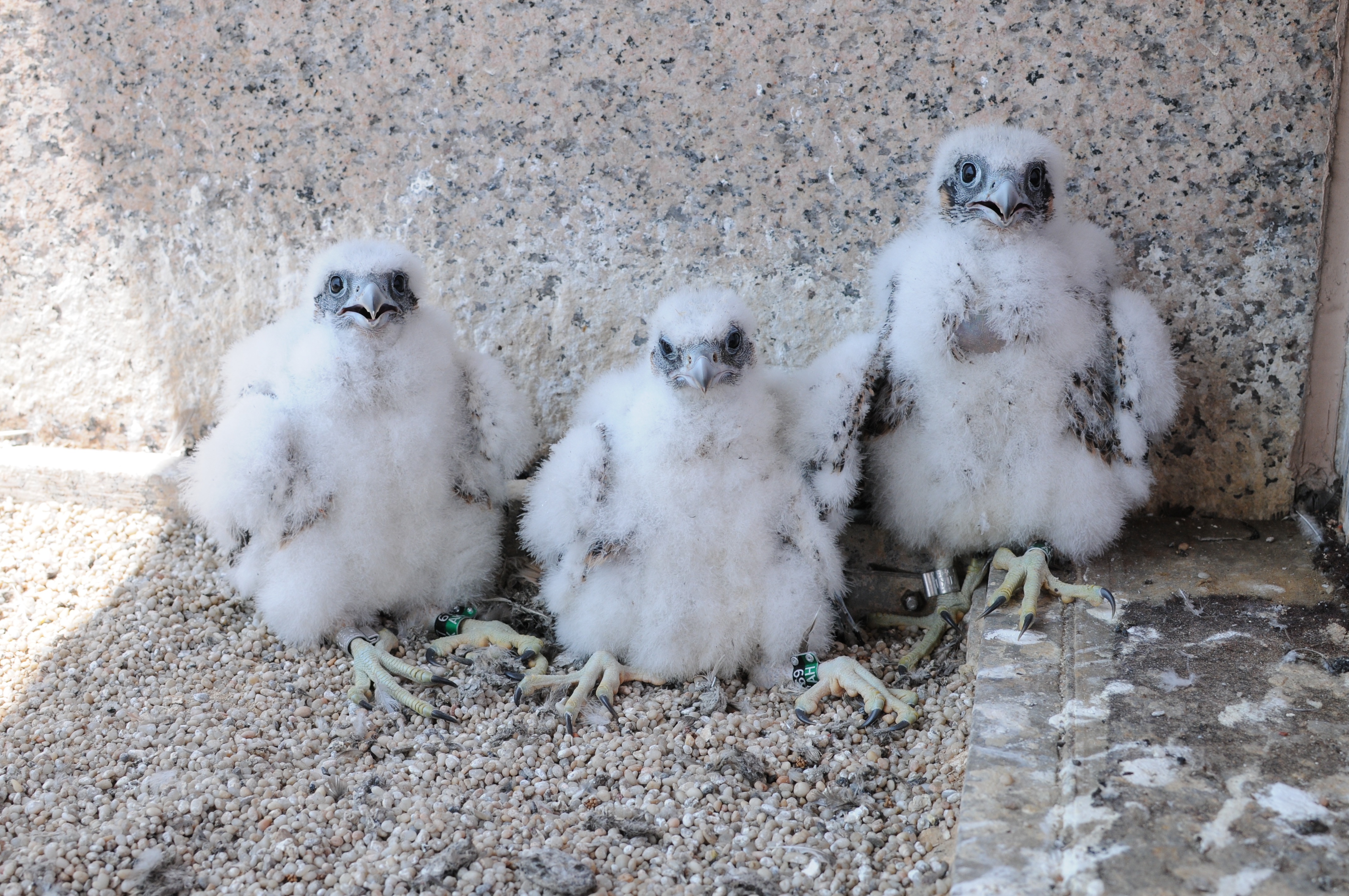 In its first season, Boh and Barb raised three eyases (falcon chicks), Cade, Koppie, and Burnham (Burnsie for short). Fans voted to name the eyases after Tom Cade, Ph. D., founding chairman and director of The Peregrine Fund; Craig Koppie, raptor biologist with the U.S. Fish & Wildlife Service Chesapeake Bay Field Office; and William A. Burnham, former president of The Peregrine Fund. He served with the organization from 1974 through his death in 2006.
In its first season, Boh and Barb raised three eyases (falcon chicks), Cade, Koppie, and Burnham (Burnsie for short). Fans voted to name the eyases after Tom Cade, Ph. D., founding chairman and director of The Peregrine Fund; Craig Koppie, raptor biologist with the U.S. Fish & Wildlife Service Chesapeake Bay Field Office; and William A. Burnham, former president of The Peregrine Fund. He served with the organization from 1974 through his death in 2006.
One of the most memorable highlights in 2015 came when Koppie suffered from a cold and dehydration and was temporarily removed from the nest by his namesake, Dr. Craig Koppie. The young eyas was treated at a wildlife rehabilitation center and quickly released back into the nest.
“Falcon Cam was enormously successful in its first season for the Chesapeake Conservancy. With over one million views, many dedicated fans tuned in to see Boh and Barb raise their young eyases,” Dunn said. “Baltimore’s peregrines do not migrate because there is ample food for them in the city. We are excited to watch and see what Boh and Barb’s family looks like this year.”
Special thanks to Skyline Technology Solutions, Cogent Communications, Shared Earth Foundation, the City of Baltimore, Transamerica, and 100 Light Street for making the peregrine falcon cam possible.
Osprey: One Returns, Awaits Mate. Will “Tom & Audrey” Reunite Soon?
www.chesapeakeconservancy.org/osprey-cam
The 2016 season of the Chesapeake Conservancy’s osprey cam has kicked off with the recent return of one osprey that now awaits its mate. The daily lives of “Tom and Audrey,” two osprey that make their home on Kent Island after their winter sojourn in South America, are shared with the world via this live streaming webcam. The first osprey has returned to the platform and started building a new nest in preparation for raising this season’s brood of chicks.
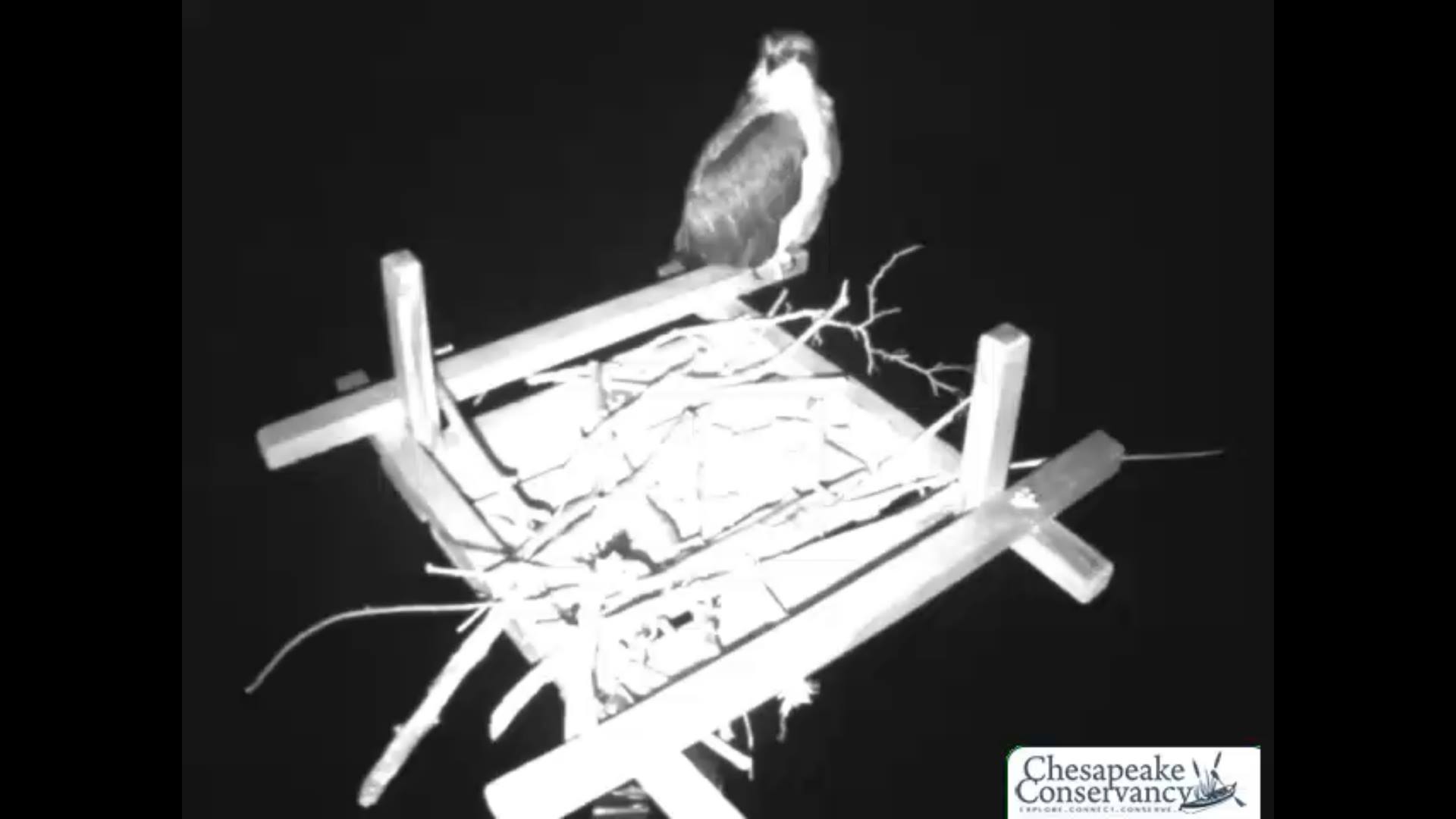 Now in its fourth season, the Chesapeake Conservancy Osprey Cam now includes infrared technology installed by the homeowners, known as the “Crazy Osprey Family,” that allows users to see what is going on in the nest in total darkness. Infrared light is a wavelength of energy that is invisible to the human eye. The camera detects infrared energy (heat) and converts it into an electronic signal, which is then processed to produce a thermal image on the webcam.
Now in its fourth season, the Chesapeake Conservancy Osprey Cam now includes infrared technology installed by the homeowners, known as the “Crazy Osprey Family,” that allows users to see what is going on in the nest in total darkness. Infrared light is a wavelength of energy that is invisible to the human eye. The camera detects infrared energy (heat) and converts it into an electronic signal, which is then processed to produce a thermal image on the webcam.
The public may view the osprey webcam at www.chesapeakeconservancy.org/osprey-cam, and read the entertaining Osprey Camera Blog written by The Crazy Osprey Family at https://ospreycamerablog.wordpress.com.
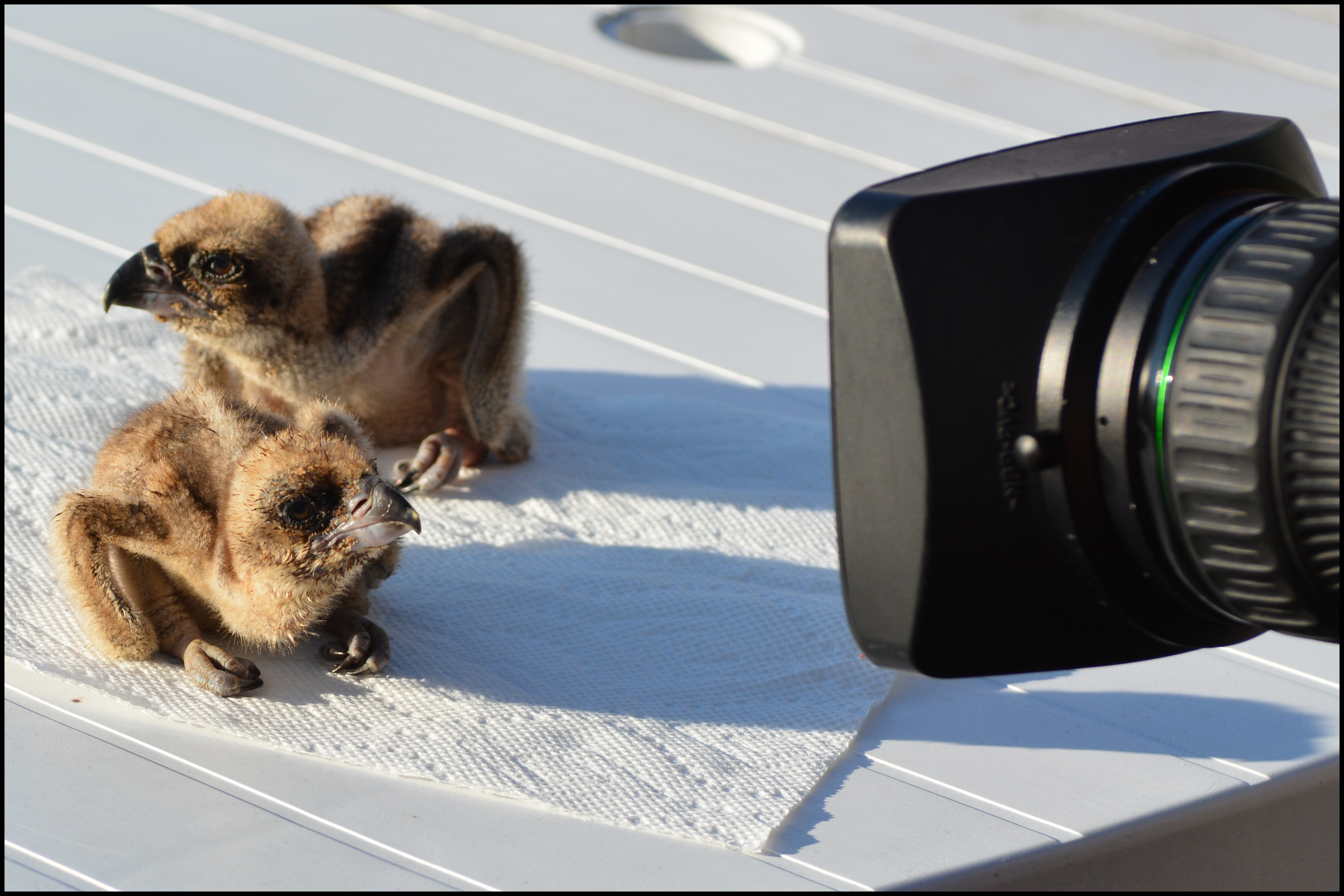 Last year, the nest was fraught with drama. A new Tom, who fans dubbed “Calico Tom,” became Audrey’s new mate. The new couple laid three eggs that did not hatch. However, with the help of U.S. Fish and Wildlife Service Raptor Biologist, Craig Koppie, Tom and Audrey successfully adopted two foster chicks, which fans voted to name Maine and Montana. Later in the season, a visiting juvenile osprey, aptly named E.T., became a regular part of the nest.
Last year, the nest was fraught with drama. A new Tom, who fans dubbed “Calico Tom,” became Audrey’s new mate. The new couple laid three eggs that did not hatch. However, with the help of U.S. Fish and Wildlife Service Raptor Biologist, Craig Koppie, Tom and Audrey successfully adopted two foster chicks, which fans voted to name Maine and Montana. Later in the season, a visiting juvenile osprey, aptly named E.T., became a regular part of the nest.
“Tom & Audrey are enormously helpful in drawing attention to the Chesapeake Conservancy’s mission and our work to protect and restore the health of the Chesapeake Bay watershed. Last year, we had over one million visits to the webcam from all over the world,” Dunn said. “We couldn’t ask for better ambassadors than Tom & Audrey to encourage people to get out and experience wildlife along the Captain John Smith Chesapeake National Historic Trail. People can see these iconic birds throughout the Chesapeake in special places like Mallows Bay or the Middle Branch in Baltimore.”
The Chesapeake Conservancy extends our special thanks to Skyline Technology Solutions for managing the video stream and installing and setting up the camera, Investigative Options Inc. for maintaining the camera, the Shared Earth Foundation for its financial support, and “The Crazy Osprey” family who generously host the platform and equipment and write the blog.
Great Blue Heron: Chesapeake Conservancy Crowdfunding to Launch a Third Webcam Featuring a Rookery on Maryland’s Eastern Shore.
The Chesapeake Conservancy is currently crowdfunding to launch a third wildlife webcam featuring a great blue heron rookery on Maryland’s Eastern Shore. For more information, please visit gofund.me/6cru5qxg
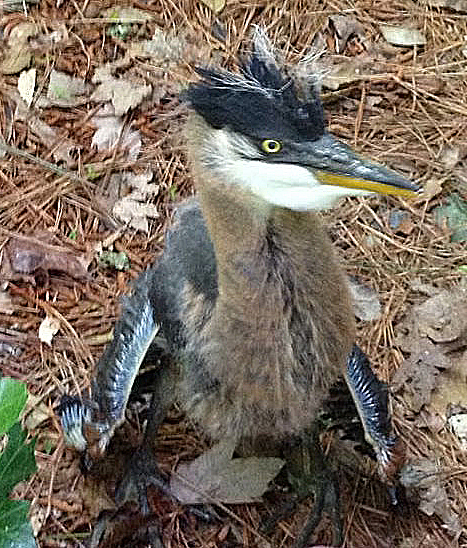 Recently, a homeowner contacted the Chesapeake Conservancy and invited the organization to set up a live-streaming webcam featuring the rookery. For the last 10 years, each spring, the property has been home to 10-12 great blue heron nests nestled in a relatively small loblolly pine grove. Once the large blue eggs hatch, this rookery contains roughly 50 great blue heron at a time.
Recently, a homeowner contacted the Chesapeake Conservancy and invited the organization to set up a live-streaming webcam featuring the rookery. For the last 10 years, each spring, the property has been home to 10-12 great blue heron nests nestled in a relatively small loblolly pine grove. Once the large blue eggs hatch, this rookery contains roughly 50 great blue heron at a time.
“We can share the wonder of these majestic birds live on your screen 24-hours-a-day, complete with infrared camera technology so that you can also see the herons in the dark,” Chesapeake Conservancy Director of Communications Jody Hedeman Couser said. “But we need your help to make it a reality. For a small donation, you can help the Chesapeake Conservancy purchase the equipment, pay for the service to set up the webcam and broadcast the rookery all over the world.”
The Chesapeake Conservancy is seeking funding for this new webcam through the online fundraising website Go Fund Me. To date, the Chesapeake Conservancy has raised nearly $5,500 of the goal of $10,000. To donate to help fund the Great Blue Heron Rookery Cam, visit www.gofundme.com/6cru5qxg
The Chesapeake Conservancy has secured a generous donation from a tree service based in Rehobeth, DE, to mount the cam in the 100-foot-tall pine, and a discounted equipment and installation rate through Skyline Technology Solutions, Inc., the same company that helped the organization launch the other very successful wildlife webcams.
###
The Chesapeake Conservancy’s mission is to strengthen the connection between people and the watershed, conserve the landscapes and special places that sustain the Chesapeake’s unique natural and cultural resources, and restore landscapes, rivers, and habitats in the Chesapeake Bay region.
For more information, please visit www.ChesapeakeConservancy.org
Additional Background: Peregrines
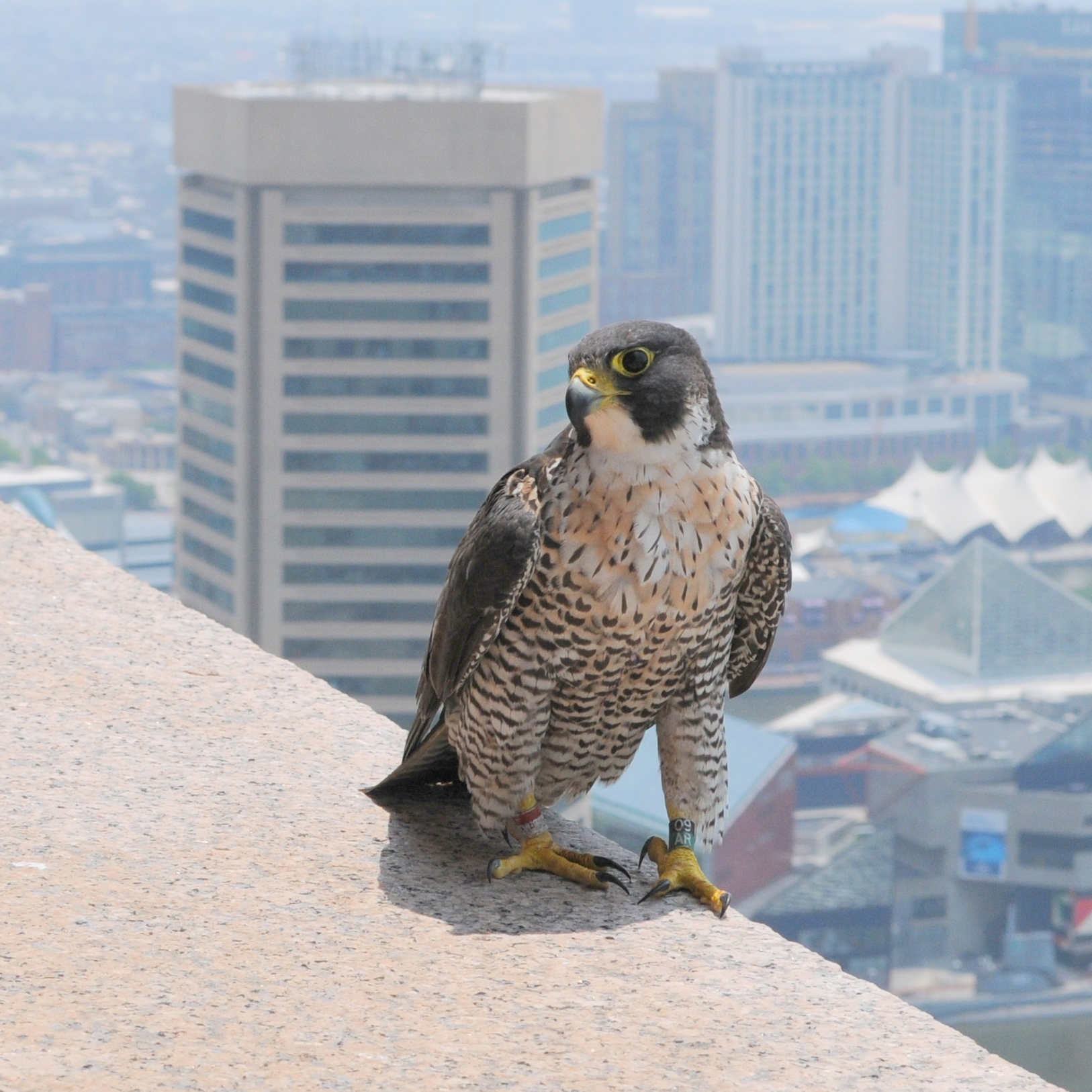
Found on every continent except Antarctica, peregrine falcons (Falco peregrinus) are one of the best-known conservation success stories and are believed to be the fastest bird in the world, traveling up to 200 mph during hunts. These amazing birds have recovered from near eradication in eastern North America, now making many large cities and coastal areas their homes.
Additional Background: Osprey
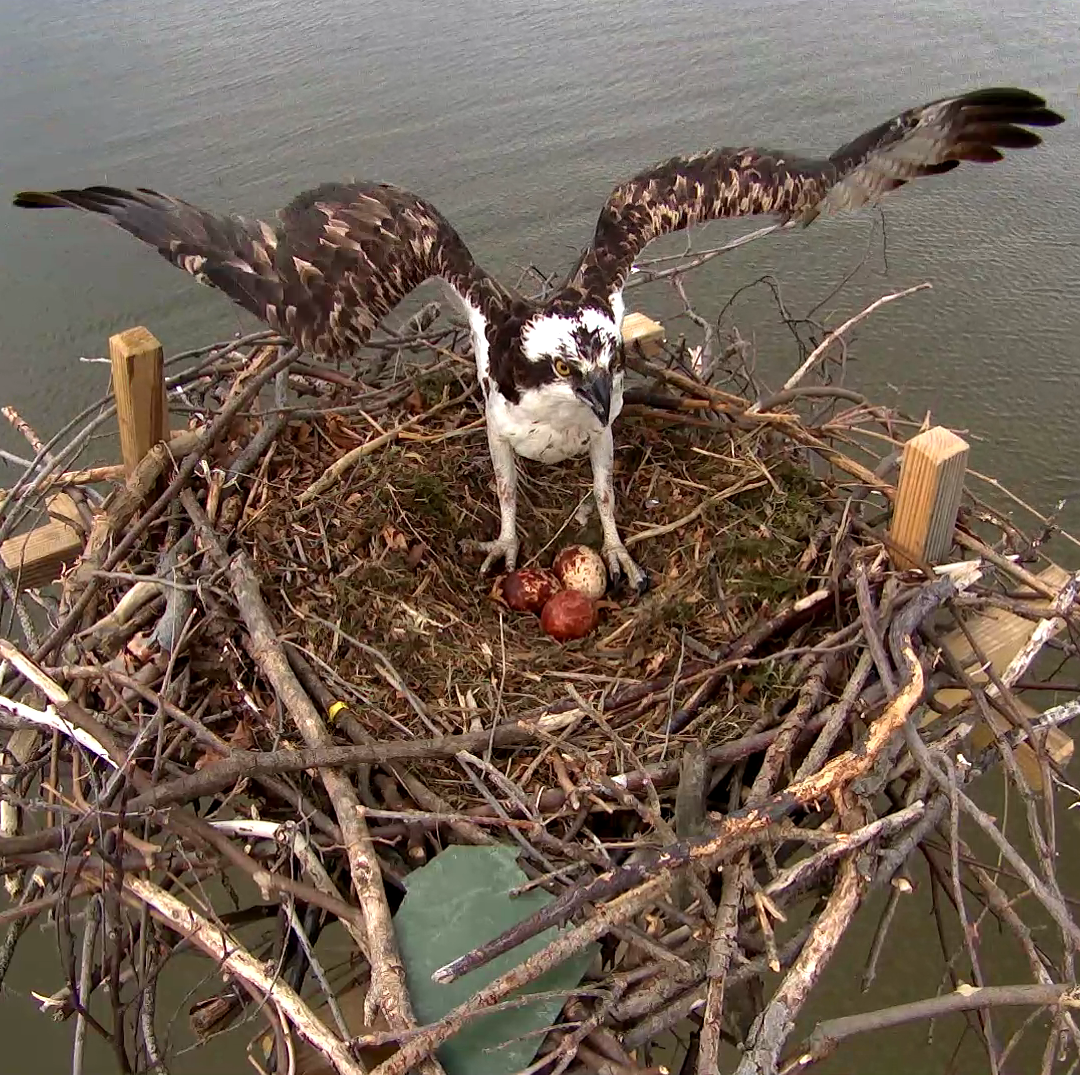
Found on every continent except Antarctica, osprey (Pandion haliaetus) are one of the Chesapeake’s most amazing birds for a number of reasons. They migrate thousands of miles each year to and from Central and South America, mate for life, and return to the same spot year after year, despite spending the winter apart from each other.
Additional Background: Great Blue Heron
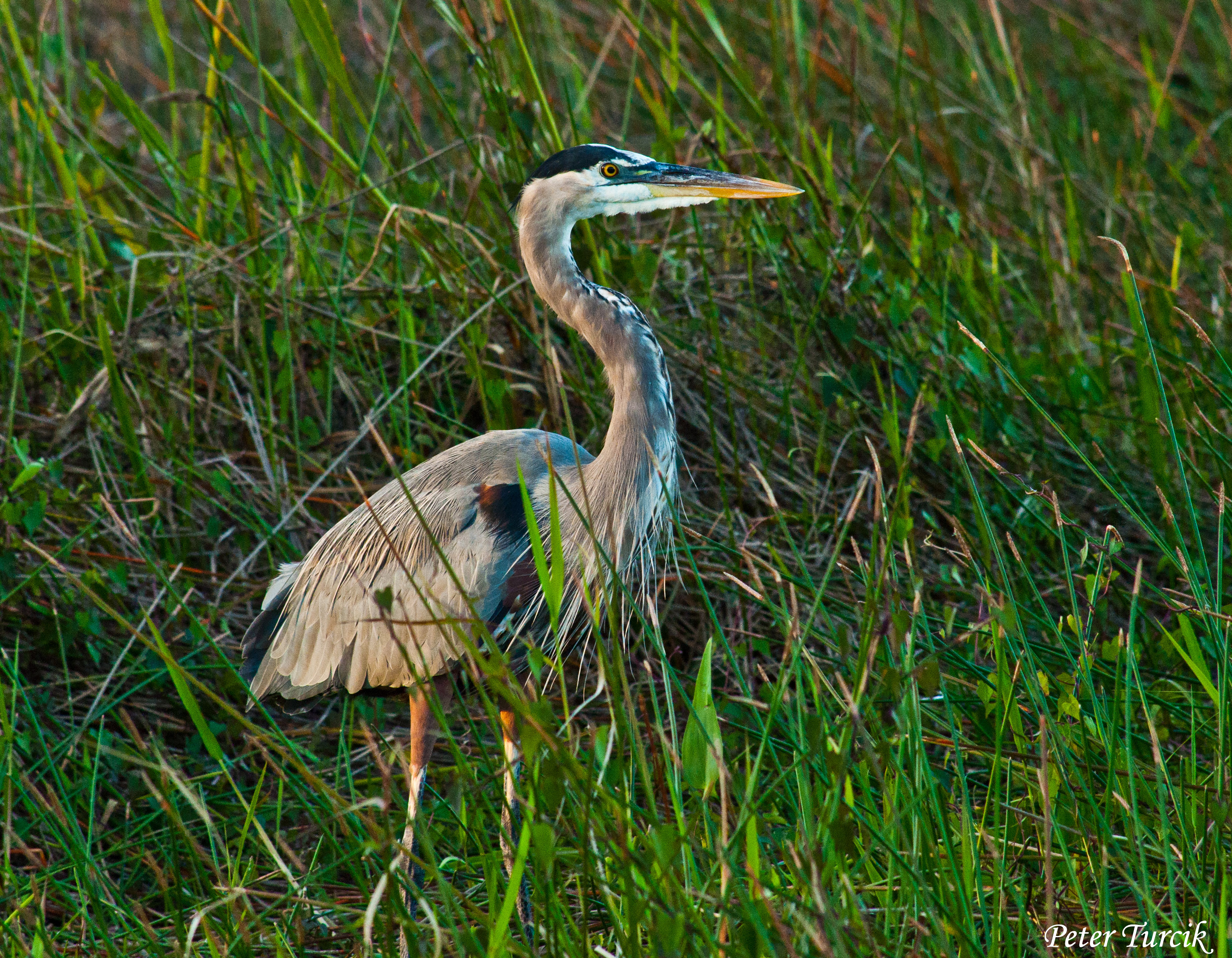 According to the Chesapeake Bay Program’s website, great blue herons (Ardea herodias) live in colonies called rookeries. These tall, bluish-gray wading birds have long, pointed bills and graceful, S-shaped necks. They live year-round in marshes and wetlands throughout the Chesapeake Bay region and are also found on freshwater lakes, ponds and impoundments. The great blue heron grows to 4 feet tall with a 6 to 7 foot wingspan. Despite its large size, its hollow bones allow it to weigh only 5 to 6 pounds. The great blue heron eats mostly fish, but will also feed on insects, amphibians, crustaceans and other small animals. It silently stalks its prey in shallow waters, and then plunges its bill into the water to capture it. It will spend about 90 percent of its waking hours hunting for food.
According to the Chesapeake Bay Program’s website, great blue herons (Ardea herodias) live in colonies called rookeries. These tall, bluish-gray wading birds have long, pointed bills and graceful, S-shaped necks. They live year-round in marshes and wetlands throughout the Chesapeake Bay region and are also found on freshwater lakes, ponds and impoundments. The great blue heron grows to 4 feet tall with a 6 to 7 foot wingspan. Despite its large size, its hollow bones allow it to weigh only 5 to 6 pounds. The great blue heron eats mostly fish, but will also feed on insects, amphibians, crustaceans and other small animals. It silently stalks its prey in shallow waters, and then plunges its bill into the water to capture it. It will spend about 90 percent of its waking hours hunting for food.